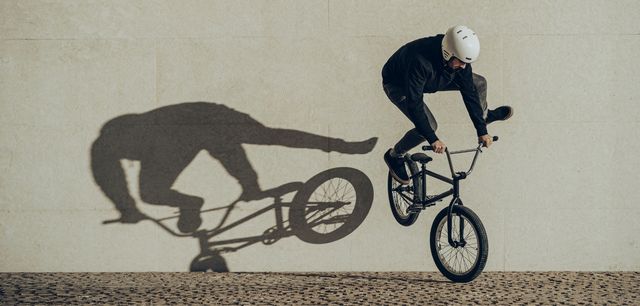12 September 2024
By the end of the 19th century, although there was plenty of potential for further development, the bicycle had become suitable for everyday use. Like every other groundbreaking invention, it has brought about massive societal change in its short lifetime. In the second part of our brief history of the bicycle, we explore how the bicycle democratised mobility, advanced the cause of emancipation, became a cult object and conquered the mountains before also restoring the mobility of the older generations.
The Sultan of Zanzibar has one, as does the Russian Tsar. The Emir of Kabul goes a step further, equipping his entire harem with bicycles. Starting in the 1890s, the two-wheeler becomes a fashionable must-have for various princely families. But the middle and working classes, in particular, also discover the ever more affordable velocipede. After all, with a bicycle you no longer need an expensive coach and horses to get quickly from A to B under your own steam.
Women, especially, are captivated by the new, hitherto undreamt-of freedom of movement offered by the bicycle. They leave their stifling corsets in the wardrobe and shorten their heavy, floor-length Victorian skirts. Either that, or they swap them immediately for practical clothing like men’s trousers and harem pants, much to the scandalised dismay of many of their contemporaries. Women on bicycles become the subject of heated debate: Some physicians warn darkly that cycling will lead to ulcers and infertility. Even worse: They might use it as a way of masturbating, warns Dr. Martin Mendelsohn in the “Deutsche Medizinische Zeitschrift” in 1896. Doctor Carl Fressel, on the other hand, is all in favour “ladies’ cycling”, the English version of the title of his manual, published in 1897, which emphasises the health benefits of bicycling.
The bicycle as a leisure vehicle
Going back a year, American women’s rights campaigner Susan B. Anthony tells the “New York Sunday World” that cycling has done more for the emancipation of women than anything else in the world. “I’m delighted every time I see a woman ride past on a bicycle. It gives her a feeling of self-confidence and independence as soon as she sits on the saddle – and off she goes. It’s the very image of unconstrained femininity.”
Even women in long skirts can comfortably get on a bicycle: John Kemp Starley, the inventor of the modern two-wheeler, launches the world’s first bicycle with a dropped crossbar, the “Ladies Rover”, in 1889. This is followed nine years later by the first ever ladies’ model with coasting brake.
At the end of the 19th century, Dutch bicycle makers take the English design and develop it into the Dutch roadster. This utility bike soon enjoys enormous popularity beyond the borders of the Netherlands – among men and women alike. Thanks to the full chainguard, men can now also be confident that their trousers won’t pick up grease from the chain.
© Adobe StockThe Bonanza bike became popular in Germany in the 1970s. Its trademark: the "banana saddle" with backrest and the two-part stag antler handlebars.
© Adobe StockShortly before 1900, women also got on their bikes. A scandal at the time, especially from the men's point of view.
From the chopper to the BMX
As the years and decades pass, different types of bike are developed for different target groups and needs. The year 1963 sees kids and teenagers cruising through the suburbs of the USA on Schwinn Sting-Rays for the first time. With its “ape hanger” handlebars, upper-tube-mounted gear lever and banana-shaped saddle plus back rest, the Sting-Ray looks like a shrunk down pedal version of the chopper motorcycle. A few years later, the trend spreads to Europe, taking the form of the Bonanza bike in Germany and the Raleigh Chopper in the UK. Decorated with pennants on the handlebars and foxtails on the saddle which stream behind in the slipstream as they speed along, the Bonanza soon becomes the pride and joy of its young riders.
In the US, youngsters on their Sting-Rays try to outride each other on sand racecourses dotted with ski jumps and sharp bends. But as these bikes are not designed for such hard use, the developers come up with a stronger frame. The raised handlebars and small wheels are preserved: This marks the birth of the BMX bike, a craze which initially takes off in the US before spreading further afield. With the release of Steven Spielberg’s “E.T.” in 1982, in which a group of young friends on bikes is pursued by the police in a crazy chase sequence, Europe is also gripped by BMX madness. For several years, the BMX tops the Christmas and birthday lists of German children and teens.
Suspension smooths out rough rides
The BMX bike makes it possible to take bikes offroad. But with its small wheels and lack of gears, it is hardly suitable for longer rides over rough terrain. It is exactly this issue that racing cyclists and frame builders Gary Fisher and Joe Breeze turn their minds to: In 1973, they start tearing down the steep scree slopes of Mount Tamalpais in California on converted Schwinn bikes. They will later be joined by Tom Ritchey and Charles Kelly. These wild downhill charges will be the forebears of the Repack races. The offroad enthusiasts tinker with the wheels and frame geometry to adapt their bikes better to steep climbs and descents through rough terrain: The result is fat wheels with coarse profiles, strong motorbike handlebars with practical thumb-operated gear levers, and a third small chain ring at the front to allow the rider to climb especially steep hills – creating, as the name suggests, the mountain bike. In 1981, the “Specialized Stumpjumper” becomes the first series-production mountain bike. The steel frame is soon replaced by lighter aluminium, and the top tube is slanted to reduce the weight and increase freedom of movement on the bike. Suspension forks and shock absorbers in the frame also make it possible to ride in less boneshaking discomfort over rough terrain.
The robust mountain bike sets out to conquer the world, including lowland areas and towns and cities with fewer offroad riding opportunities. The early 1990s see the introduction of its more comfortable and street-legal relative: the trekking bike with mudguards, lights and luggage rack. In the same period, new life is injected into an old idea, this time with new technology hinting at a brighter future.
Old idea, newly electrified
The electrification which takes hold at the end of the 19th century does not ignore the bicycle. The first patents for electric bicycles are applied for before the turn of the century. But these are not yet enough for series production. Phillips subsidiary EMI starts building its first limited-edition electric bike in 1932. However, the “Simplex” is not blessed with sophisticated high-performance electronics, and its chunky batteries do not offer much range, either.
After the Second World War, bikes with an auxiliary motor flourish briefly once more. But these are petrol-driven rather than electric and are soon left behind by more powerful mopeds and scooters. Although tinkering with electric bikes does continue over the next few decades, the products which emerge are heavy, expensive and ill-suited to daily use and rarely make it past the prototype stage.
The pedelec principle
It is Egon Gelhard who lays the foundations for the pedelec principle. In 1982, the inventor from Zülpich unveils his first practical study, in the form of the Gelhard Bike, of a bicycle whose motor support depends on how hard the rider pedals. The faster you pedal, the more the motor comes to your aid. If you stop pedalling, the motor stops helping you. However, this principle is only taken up and implemented in 1990 by the Swiss firm Velocity.
Three years later, in 1993, Yamaha launches its first pedelec system, the “Yamaha PAS”. Other manufacturers soon jump onto the e-bike train. But it will take a few years and the addition of one decisive element - the lithium-ion battery - for this train to pick up speed. This lightweight but powerful battery is first installed in an e-bike in 2005 and quickly becomes the standard.
In Germany today, eleven million e-bikes are now roaming the roads, meaning that their number has increased nearly sevenfold in just ten years. In 2023, more e-bikes than traditional pedal cycles were sold in the country for the first time. And what started out as clunky and ungainly two-wheelers are now becoming ever sleeker and more fashionable, increasingly shedding their image as just meant for old people. The customer base is also getting younger to match. While the average buyer age in 2017 was 57, five years later it was only 50. According to a study carried out in 2020, the e-bike buying market was dominated by 30 to 39-year-olds, with 50 to 59-year-olds very close behind in second place.
Meanwhile, Karl von Drais’s original invention is making a remarkable comeback among the very young: With the aid of balance bikes, children as young as one can start developing their sense of balance. Allowing them to make the transition to pedal cycles much more seamlessly and with far fewer falls than was the case for their stabiliser-wheel-dependent parents. In other words, the development of individual cyclists is recapitulating the evolution of the bicycle: In the beginning you have the “running machine”, followed later by the pedal cycle.
Click here to read the first part of our brief history of the bicycle.
© Adobe StockThe first e-bikes already existed at the end of the 19th century. However, electric bikes only really took off after 2005.






